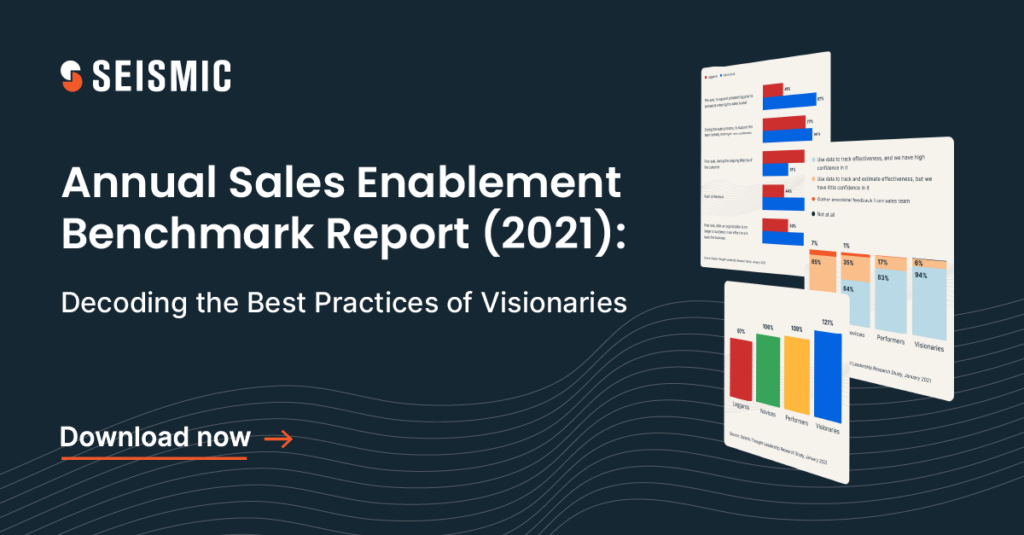We recently announced findings from our research in the Seismic Annual Sales Enablement Benchmark Report (2021): Decoding the Best Practices of Visionaries. The report evaluates how B2B organizations leverage sales enablement practices and technology to support go-to-market activities and drive successful business outcomes.
In our previous blog, we shared findings from the report, including how sales enablement transforms the way businesses operate and scale best practices. Our survey also found that go-to-market (GTM) integrations are important to help businesses extract greater value from their sales enablement solution. We agree, and in this blog, we’ll share our findings, as well as a glimpse of what great looks like.
The power of well-integrated GTM technologies
Successful businesses employ multiple sales and marketing technologies to drive operational efficiencies. The most successful companies extract more value from their tech stack by seamlessly integrating systems to capture deeper insights and drive greater efficiencies.
Our research found that companies rely on a variety of technologies in their GTM tech stack. But even as businesses increasingly adopt GTM tools, only 35 percent of respondents felt their tech stack was very well integrated. When explored more closely, 70 percent of Visionaries—leaders in sales enablement—reported having a very well-integrated tech stack.
For Visionaries, a well-connected tech stack is a competitive advantage. With comprehensive, reliable data, these organizations leverage insights that support optimized strategies, stronger buyer engagement, and increased quota attainment.
As we look forward, the importance of a well-integrated GTM tech stack will continue to grow. In the next year, 69 percent of respondents plan to increase their investments in sales enablement technology. Visionaries plan to invest in even higher numbers, with 90 percent reporting they plan to deepen their investments in 2021.
Technologies like sales content solutions, social engagement tools, and conversational intelligence make teams more productive. When integrated with a sales enablement platform like Seismic, each of these technologies generates data that helps sellers deliver intelligent, insights-driven experiences with buyers. Here’s why that matters.
The future of sales will be driven by artificial intelligence (AI)
There’s no way around it: sellers are busy. And when they spend more time searching for content, building sales plays, and preparing for calls, they have less time to build relationships and sell.
AI-guided selling will transform the way sellers work and engage with buyers. But, in order to adopt AI-guided selling, companies need a well-integrated tech stack that produces the data to help AI solutions identify patterns and generate insights. Over time, AI systems will transform data into more intelligent content recommendations and improve buyer engagement.
How Seismic enables AI-guided selling
With more than 70 out-of-the-box integrations, the Seismic platform uses content analytics and data from other systems to train Seismic Aura, Seismic’s AI engine.
Seismic Aura identifies patterns, behaviors, and insights that can generate new business opportunities and increase seller productivity and efficiency. For instance, when Seismic is integrated with a CRM platform, SmartPlays use predictive intelligence to select the right sales play at the right time, eliminating the need for excessive coaching and training.
As companies prepare for the new reality of digital-first sales experiences, GTM integrations are more important than ever. Companies that cultivate a well-integrated sales and marketing tech stack will build a competitive advantage that enables continuous optimization of GTM strategy and best practices. But, perhaps most importantly, these companies will have laid the groundwork for artificial intelligence, a capability that will help sellers become more efficient and effective.
Want to learn more about sales enablement best practices? Visit our Sales Enablement for Visionaries landing page.
